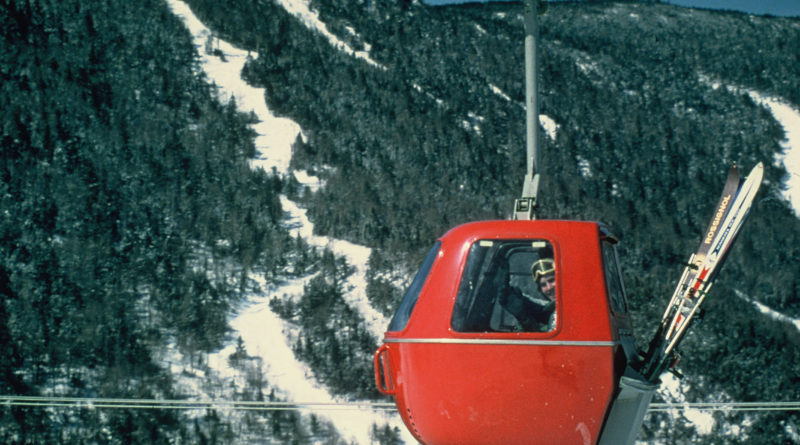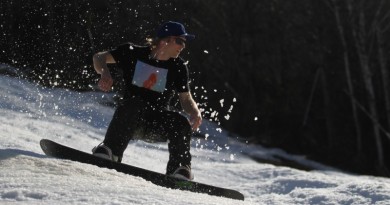60 Sweet Years of Sugarbush
There’s a lot to celebrate as Sugarbush remembers (and revives) its younger, wilder Days as “Mascara Mountain.”
The first time I skied I was five years old. I knew the words “Mad River Glen” and “Sugarbush” because my mother spoke them with reverence, fingering the words like talismans, her face lighting up as stories came back to her.
She was the ski bum in the family. At cocktail parties in our apartment in New York, she would talk about her single days in Boston, after college, and the “old gang.” They made the pilgrimage north each weekend. The final stretch, Route 17 up to Mad River Glen, was a bumpy dirt road. They bunked at Ulla Lodge, where there were dorm rooms for men and for women, and later, shared a ski house.
Growing up in Indiana, my mother was not a skier. But those Vermont weekends in the 1950s made her one. In pictures, now long-faded Polaroids, she wears lace-up leather boots, stretch pants and a heavy windbreaker. Riding the single chair, she’d burrow into the thick wool blankets handed out at the bottom. “You were never cold skiing down,” she remembers. “You had to work too hard.”
Her friends bragged about skiing the challenging trails at Mad River Glen. They talked, too, about the “new” place in the Valley, Sugarbush, and the celebrities they’d spotted there. There was talk of parties, fondue nights and about things that I couldn’t or, as I knew from the sudden hush when they saw I was listening, shouldn’t, understand.
In my five-year-old mind, the Mad River Valley was this mystical paradise—a wonderland of snow, my mother called it—populated by good friends with whom she would ski for years to come. Those friends eventually lured her to ski Chamonix. In 1960 she moved there to ski bum. Four years later, she returned to New York, married, with a toddler.
“We’re going skiing,” my mother finally announced. It was Christmas, 1967. Beneath the tree were a pair of tiny red skis with rat trap bindings, a heavy Norwegian sweater and a second-hand ski suit that was way too big.
In the early 1960s, Town & Country magazine had done a spread on this new resort, Sugarbush, opened by Damon and Sara Gadd in 1958.
I recently came across the photos Slim Aarons, the Annie Leibowitz of his era, shot for it. There was New York socialite Nan Kempner in a leopard-print jacket; founders Damon and Sara Gadd smiling from a gondola car; a full bar set up in the snow (Sugarbush was one of the first ski areas to serve alcohol at its base); fashion designer Victor Camerana and blue-blood beauty Robin Butler, scantily dressed as Adam and Eve at a party at the tony Ski Club Ten. Those were the “Mascara Mountain” years, as Vogue dubbed them.
Our arrival was far less glamorous. My father borrowed an RV whose tap water tasted of rum. The previous occupants, skiers too, found that filling the water tank with rum solved two problems: the tap water didn’t freeze and the rum didn’t run out.
We drove from New York on a Friday after his work let out, arriving in the Sugarbush dirt lot long after midnight. At first light, I stepped outside. Lincoln Peak loomed higher than any skyscraper I had seen. Snow was falling. In those early hours, the gondolas—wondrous, bulbous, bright toys—hung still and shiny in the icy air.
The Lost Valley
“I can still remember the first time I came into the Valley,” says Win Smith, Jr., chairman of Summit Ventures, (the LLC that owns Sugarbush), as he leans back in his office chair in Warren. It is late fall, 2018. Lincoln Peak is a dark hulk, shrouded in clouds. The first snow has etched white lines across the mountain’s bony shoulders and down its creased ravines—trails like Rumble and Paradise that have challenged some of the best skiers in the world.

“We came over Roxbury Gap and I remember seeing the Warren General Store and The Pitcher Inn—and they look pretty much the same now as they did then,” Smith says.
Much of the Valley, 20 miles of fertile farmland carved by the Mad River, looks as it did 20, 60 or even 100 years ago. In the open meadows to its north, cattle pick over stalks in the snow at Doug Kenyon’s farm. Inside the farm store, next to baling wire, feed and assorted hardware, is a freezer with some of the best beef money can buy. Kenyon, like many shopkeepers in town, knows his customers by name.
Many of the old farmhouse inns—Tucker Hill, Hyde Away, the Mad River Barn—that have housed skiers for the last 50 years still welcome guests (see “Valley of the Lodges,” p. 48). To the south, Lareau Farm remains a working farm and inn. The converted barn serves the wood-fired American Flatbread that founder and ski bum George Schenk has made famous.
Smith bought The Pitcher Inn, which had burned in 1993, and renovated it into a Relais & Chateau property with another valley legend, architect David Sellers (who also built Smith’s house).
Much as it was in the 1950s and 60s, the Valley today is a melting pot of old-time Vermonters, back-to-the-land hippies, European ex-ski racers and quietly wealthy vacationers. They mix easily with the wildly creative artists, Ivy-League iconoclasts, Boston suburbanites and die-hard adrenaline junkies. On the mountain, no one can tell the difference and, it appears, no one really cares.
Smith did not grow up skiing, but he melded into the Valley quickly. “I [first] came up to share a ski house and have a good time with a bunch of fraternity friends from Amherst [College],” he recalls. He ended up building a house and raised his four children on ski weekends there.
During the week, he commuted back to New York to a job at the firm his father had helped found and which became Merrill Lynch, Pierce, Fenner and Smith. Smith, Jr. worked at Merrill Lynch for 28 years, rising to executive vice president, running the international client group and working on projects such as the valuation of Howard Hughes’ estate, Barron’s reported in a 2001 story “The Son Also Rises.”
Smith followed what was going on with the ski business the way an NFL coach watches college football. “I kept an eye on Sugarbush, waiting until I thought the price would be right,” he recalls.
Les Otten had bought Sugarbush in 1994, adding it to the American Skiing Company’s portfolio of resorts, which started with Sunday River and grew to include Killington and nine others.
Otten put in the Slide Brook Express, finally connecting Sugarbush to Glen Ellen (now Mt. Ellen), the resort that had been annexed in 1979. He also added six other lifts and a 25-milllion-gallon snowmaking pond. Act 250, Vermont’s 1970 land use and development act, protected the land between the two ski areas, the vast Slide Brook Basin, as bear habitat. In the winter, it became a powder stash for savvy locals.
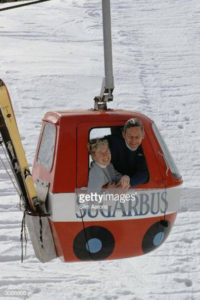
Blaise Carrig started working ski patrol under Dennis Curran in 1975, when the Gadds still owned Sugarbush. Under Otten, he worked his way up to resort president. Carrig remembers those years well. “We spent close to $30 million on those upgrades which, at the time was more in one year than I think any ski area had spent.”
“There was this amazing energy there then,” Carrig remembers. “When I first dropped out of college and came up to Sugarbush, there was a real ski bum culture there. Half the dishwashers had gone to Harvard or had Ph.Ds., and man could they ski. Guys like Sparky Potter and John Reynolds were as good as the other big names you hear about.”
Carrig, now a senior adviser at Vail Resorts, remembers living in the basement of the Mad Bush Chalet, making $55 a week and getting a free season’s pass. “We’d all go to the Wünderbar on the slopes after skiing, then maybe to Gallagher’s for a $2 beer, then over to Charlie Brown’s Blue Tooth for 99-cent all-you-can-eat pasta, and then back out to hear bands. Orsini’s (which became the site of The Common Man) would set up an after-hours party for all the dishwashers with free beers and dishwashing contests. It was a lot of fun. The Mad River Valley had this quirky, creative, zany vibe about it.”
In 1997, Carrig left to run Utah’s Wolf Creek (as it became The Canyons), then Heavenly, in California and became president of Vail Resorts’ mountain division. “Sugarbush did well back then but Les got overleveraged and expanded too quickly,” he recalls. By the late 1990s, Otten’s company, financially stressed and saddled with debt, began looking to sell off resorts.
Making a Mountain
On September 10, 2001, as Otten’s company was struggling after its too-rapid expansion, the price was right and Smith and his partner Joe Riemer, operating as Summit Ventures, closed on Sugarbush. A month later, a new CEO took over at Merrill Lynch and Smith resigned. “Right after, a former chairman called me up and said ‘What the hell are you doing? I hope you’re not going to move to Vermont and become a hermit,’” says Smith.
Smith came to Sugarbush with a background and a vision not unlike the early founders had. Damon and Sara Gadd were Ivy-League-educated Mad River Glen skiers. They moved from New York City, where Gadd’s father was a developer, to Hawaii and then, improbably, to Fayston, Vt., after reading an article about skiing in the East. They bought the Ulla Lodge (now the Hyde Away Inn) in 1954.
Damon, who had worked in tourism, bartended. Sara, a former reporter for the Honolulu Star Bulletin, waited tables. As Damon told writer Denise McCluggage in a 1973 Skiing magazine article, “I remember quite a few times Vince Sardi was dishwasher.” Sardi, an actor, was founder of the eponymous Broadway restaurant Sardi’s, in New York.
The Gadds, along with Jack Murphy, a veteran of the Army’s 10th Mountain Division and a former ski instructor in Sun Valley, began scouting around New England to build a new ski area. “Skiing was changing,” Gadd told McCluggage. “We thought that a new area was needed—one that was more elaborate, more comfortable, more modern. It started out as cocktail chatter at first, then it became serious.”
The Gadds and Murphy watched as storms marched across the Champlain Valley, their clouds gathering moisture from the broad lake, stacking up at the ridgelines of the Greens and dumping prodigious snow on their eastern slopes. Lincoln Peak, less than 10 miles south from Mad River Glen’s General Stark Mountain, seemed as good a place as any to execute their vision. The terrain was varied. It faced north. Over Christmas week in 1969 an historic Nor’easter piled 30 inches in Burlington and a whopping 44 inches in Waitsfield.
Murphy was put in charge of cutting trails. An old logging road, extended to the summit, became the gnarly, windy Jester. Rumble and Paradise were classic, tight, gladed trails. Stein Eriksen, Sugarbush’s legendary ski school director from 1963 to 1966, persuaded Murphy to cut Stein’s, a broad, straight shot, while Glade was Murphy’s own tribute to western resorts. Decades later, two of America’s best skiers would face off on Stein’s when extreme skiing pioneer John Egan raced World Cup mogul champion Jonny Mosely down the trail. Egan later called that his “craziest day on skis.”
The Extreme Team
John Egan was barely out of high school when he arrived in the Valley in 1976 as a ski bum and dishwasher at Trodd and Lexi Fortna’s Golden Horse Lodge—and he never really left. Two years later, a filmmaker named Warren Miller came to town looking for skiers. Egan made the cut for “A La Carte” and recruited his younger brother Dan. Together they appeared in more than 17 films. They also traveled the world to ski the Andes, Greenland and Russia’s Kamchatka Peninsula. With brothers Rob and Eric DesLauriers (whose father founded Bolton Valley ski area), they became the North Face Extreme Team, filming their own ski adventures in exotic destinations and hosting advanced extreme skiing clinics.
No matter where they went, John Egan always returned to the Valley. “Skiing the terrain here—with its the natural lines, rocks and roots—just makes you a better skier,” he has said, over and over.
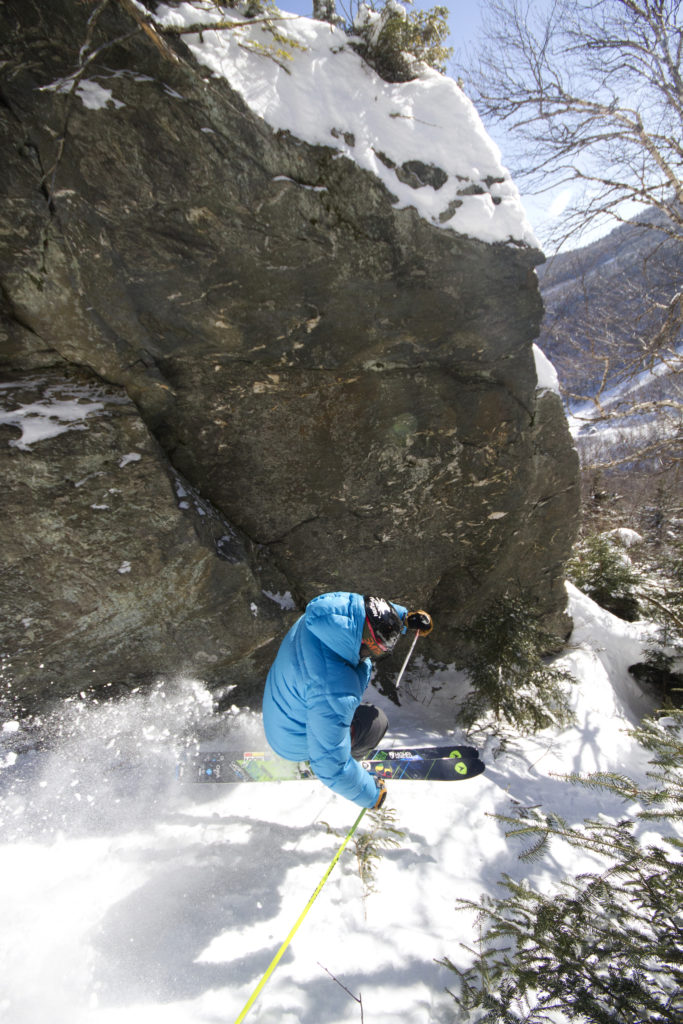
In 1998, Egan launched the Castlerock Extreme—a challenge to see who could best freeski the gnarly lines of the trail that runs beneath the Castlerock chair. “I realized I could ski it top to bottom in 90 seconds, so we decided to double that and set up a challenge to see who could ski Lift Line well in under three minutes.” The competition has been going strong for 20 years, though the time limit is no more.
Since the years when first Peter Estin, a prep-school bred Dartmouth grad, then dashing Stein Eriksen (known for sending a graceful backflip, mid-run, to impress his students), then Austrian Sigi Grottendorfer ran the ski school, Sugarbush has been known for its charismatic ski instructors. And they helped train some of the best skiers on the planet.
Denise McCluggage, a ski writer and race car driver with Monte Carlo Rally victories and a history of dating actors such as Steve McQueen, also landed in Warren. A founding editor of what is now Autoweek magazine, McCluggage was a passionate skier and developed a new approach to skiing that mixed in sports psychology and visualization. Her 1977 book The Centered Skier gave rise to a different type of ski school workshop at Sugarbush and revolutionized how people learned to ski. “She was way ahead of her time,” Carrig remembers.
Ann Battelle, two-time World Cup champion in moguls, credits her love for bumps to skiing Sugarbush during her days at Middlebury College in the late Eighties. “We had a group of about 15 that would ski every chance we got—parents, big kids, little kids—everyone was welcome. We thought we owned that mountain, befriending the ski patrol and skiing Exterminator to what is now called Tumbler,” she remembers. David Babic, whose father Tom was a liftie at Sugarbush and whose brother Kevin is now V.P. of Finance, also became a champion mogul skier and medaled in the World Cup finals in 2008.
The Green Mountain Valley School (which trains at Sugarbush’s Kelly Brush Race Arena), has turned out
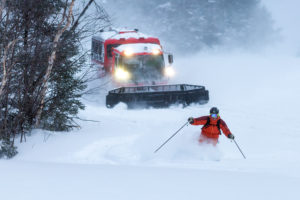
some of the nation’s top skiers. Grads include Olympians Doug Lewis, A.J. Kitt, Jeremy Nobis and his sister Shannon, Daron Rahlves and A.J. Ginnis, as well as U.S. Alpine team members Drew Duffy and Abi Jewett, Ben Ritchie and World Cup racer Brian McLaughlin.
Singer/songwriter Grace Potter, whose father Sparky made the original Sugarbush sign for the Gadds (and still makes signs for resorts around the country) did a stint at G.M.V.S.
“My dad was a ski bum and I was really absorbed in the ski culture and competitive, so I grabbed as much as I could out of skiing here,” she said in a 2015 interview with Vermont Ski + Ride. “When I was in grade school, I’d get out on half days on Fridays to ski. Later I went to the Green Mountain Valley School and got into ski racing with some pretty amazing athletes like Doug Lewis.”
March Madness
The competitions that Sugarbush may be best known for are not downhills or bump contests but less serious events such as the Gelandesprung Championship (a citizen’s ski jumping competition), the Chez Henri Cup (which Henri Borel, 93, still races in), Sloshwicking (a bizarre race involving a ski on one foot, a snowshoe on the other and a broom as a weapon), and the Cowbell Champagne Party (hit the cowbell
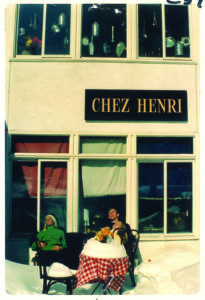
with a champagne cork and you win).
This year, many of those are being revived and March Madness, a month of sunshine and craziness, promises to bring it up a notch, ending with a tradition that’s been going on since 1969: pond skimming.
When it comes to pond skimming, Win Smith is not a bystander. Often clad in an Hawaiian shirt, mirror glasses and a Hawaiian lei, the former V.P. of Merrill Lynch usually manages to skim the surface on fat skis without getting his sandy hair wet.
In the years he’s spent at Sugarbush, Smith (who has run a sub-three-hour marathon) has only become more of a diehard skier. He’s on the mountain each day by nine in the morning and in recent years has logged more than 100 days, even as he looks toward his 70th year in 2019.
“Life begins at 60,” says Smith as he leans back in his chair wearing fleece, jeans and tennis shoes. He looks relaxed. “That’s what a Chinese woman told me once and I believe it.”
In 2009, Smith reached a pivotal point in his life. “I was rafting in class IV rapids in British Columbia and the raft flipped,” he says. “After that, I reevaluated things.” That year he moved to Vermont to manage Sugarbush full time, and reconnected with Shelburne resident Lilli Ruane, a childhood friend who later became his second wife. “I may have thought about Sugarbush as an investment at one time,” he says, “but for the most part it’s been a passion.”
If Damon Gadd said he wanted to make skiing “more comfortable,” Smith took that to the next level. He took a more hands-on approach after 2009, making the master plan a reality his primary job. After raising money with partners and gaining $20 million from 40 foreign investors through the EB-5 program (most of which is paid off), Sugarbush had the funds to move forward.
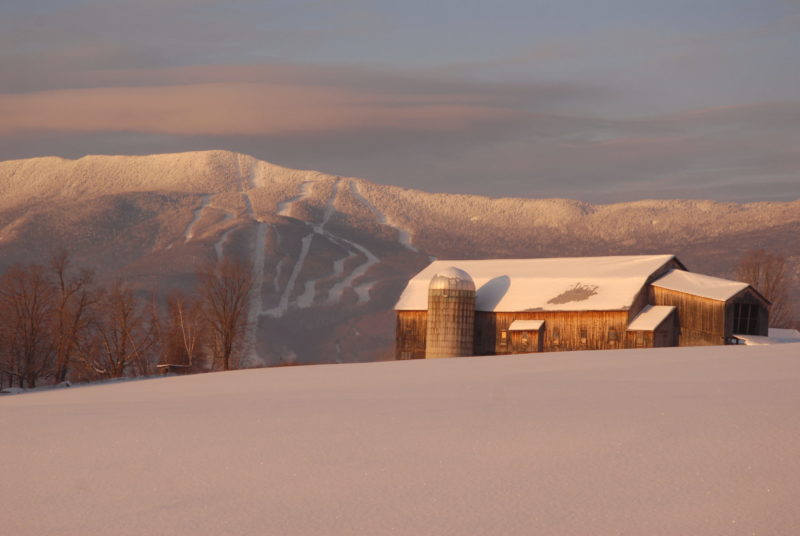
With an eye toward Vermont traditions, Smith began building the Lincoln Peak Village. The ski school, called “The Schoolhouse” building, was fashioned after a traditional white clapboard meeting house. The red Rumbles restaurant (formerly Timbers) is reminiscent of a giant silo. The Clay Brook Hotel with its 61 rooms and “residences” stands slopeside in a pleasing red clapboard building. Institutions like the Valley House Lodge remained but its Wünderbar, where the Gadds and their bold-face-named friends would gather for lunch and martinis was moved upstairs, with a retro theme.
Chez Henri, the iconic French bistro Henri Borel started in 1964, remains across a small footbridge from the slopes, tucked into a basement. Borel, 93, still skis nearly every day and presides (and competes in) the Chez Henri Cup which he launched in 1986.
So, what is next? What would Smith do if he had unlimited funds? He chuckles at this question. “There’s lots more to do,’” he says. “I’d add another snowmaking pond, another mid-mountain place to eat; perhaps a conference center at Lincoln Peak. I’d also look to make this more attractive in mid-week and off-season—not with ferris wheels and waterparks but maybe more intermediate mountain bike trails.”
As Vail Resorts and Alterra have gobbled up resorts to the north (Stowe and Okemo) and south (Stratton), Sugarbush has dropped its season pass prices and joined both the Mountain Collective and Ikon passes. Smith remains optimistic. “If I had to think about one word that defines Sugarbush, I’d say it’s ‘community.’ There’s a loyalty to this place that I am not sure you see at every mountain.” Carrig agrees: “Sugarbush knows who it is. It has a character you won’t find anywhere else. For many skiers, it’s not about the price of the pass but identifying with a place. Mad River Valley skiers identify with this place.”
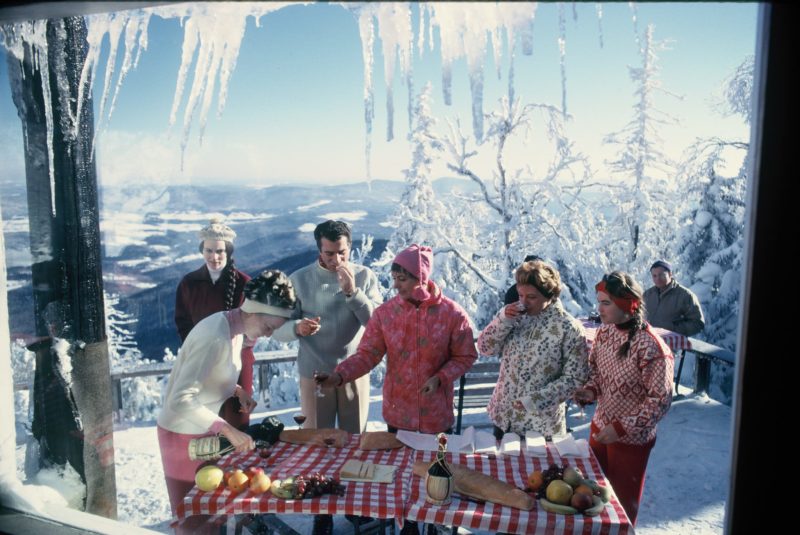
A Mountain of Change
In my late twenties, nearly 25 years after that first ski trip, I found myself back in the Mad River Valley. Saturday was a brilliant day of sun. I skied hard and joined the crowd cracking open beers after. Two fellow journalists whom I had met once on a beach in Antigua years before—writer Jill Bobrow and photographer Dana Jinkins—passed by. We recognized each other and they stopped to talk.
“You can’t go back to New York tomorrow,” Bobrow said after catching up, “come stay. We’re doing dinner and a full-moon ski after.”
It’s the type of hospitality that happens in the Valley—where if you ski you are instantly part of a family. That night, as we skimmed across a high meadow, the slopes of Sugarbush shining across the valley in the moonlight, I swore one day I’d move here. It took a decade.
Since then, there have been days pounding the bumps down Jester, darting into the powdery woods off Paradise, and spring afternoons listening to a band outside at Castlerock Pub.
And last March, there was a skin up for a candlelight beer tasting dinner at Allyn’s Lodge. We sat at long
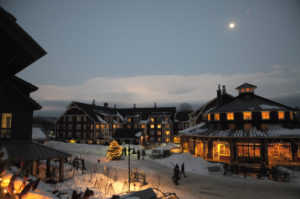
tables. Chef Jim Dinan paired Frost Beer Works brews with a steak so tender it dissolved on the tongue. After, in the dark, guided by headlamps ,we flew down the trails, giddy from the beer. The mild night air was tinged with the scent of wet moss and spring.
I paused at the top of the last knoll, looking down at the Lincoln Peak village, the sparkling lights of the hotel and beyond, the dark parking lot where I’d stepped out of an R.V. 50 years ago.
I thought of my mother, now 90, and how skiing here steered her life in ways a girl from Indiana could not have possibly imagined. I thought about the past 60 years of this resort, the Gadds, Carrig’s era, and now Win Smith’s reign. And it occurred to me that people have changed Sugarbush far less than the mountain has changed them.
In the dark, I quietly said two words, long overdue: “Thank you.”
Featured Photo Caption: When it opened in 1958, Sugarbush’s original three-person Carlevaro-Savio gondola at Lincoln Peak gave skiers the longest vertical rise in the East. Photo courtesy Sugarbush Archives.

